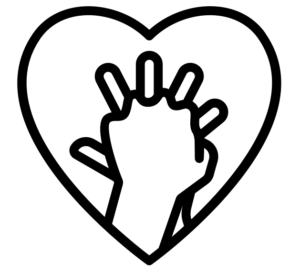Cardio-Pulmonary Resusciation
What is CPR?
Overview
Cardio-Pulmonary Resuscitation (CPR) is an emergency procedure that combines chest compressions with rescue breaths to maintain vital blood flow and oxygenation in a person who has suffered a Sudden Cardiac Arrest (SCA). When the heart stops pumping, the body’s tissues, especially the brain, are deprived of oxygen, leading to irreversible damage within minutes.
To perform CPR, follow these basic steps:

1. Check for Scene Safety:
Ensure the scene is safe, if not, move the victim to a safe place, before attempting any thing else.

2. Check for responsiveness:
Tap the victim on their shoulder and call out loudly to see if they are responsive. If there’s no response and they’re not breathing or only gasping, call for emergency medical help immediately. All the above to be completed in less than 10 secs.

3. Begin chest compressions:
Position your hands, one on top of the other, in the center of the victim’s chest, between the nipples. Push down hard and fast at a rate of 100 to 120 compressions per minute. Allow the chest to fully recoil between compressions to help the heart pump blood effectively.

4. Open the airway:
After 30 compressions, gently tilt the victim’s head back and lift their chin to open the airway.

5. Provide rescue breaths:
Pinch the victim’s nose shut, take a normal breath, and give two breaths into their mouth, watching for the chest to rise. If the chest doesn’t rise, reposition the head and try again. Alternate between 30 compressions and 2 breaths.
CPR helps by keeping oxygenated blood flowing to the brain and heart, which can prevent brain damage and improve the chances of survival until emergency services arrive. Early CPR, especially when combined with the use of an Automated External Defibrillator (AED), significantly increases the likelihood of survival after cardiac arrest.
Join Us
Help spread awareness and empower your community with essential CPR skills by becoming a ReBeat Coordinator, or use your certification to support our life-saving workshops as a Volunteer.
